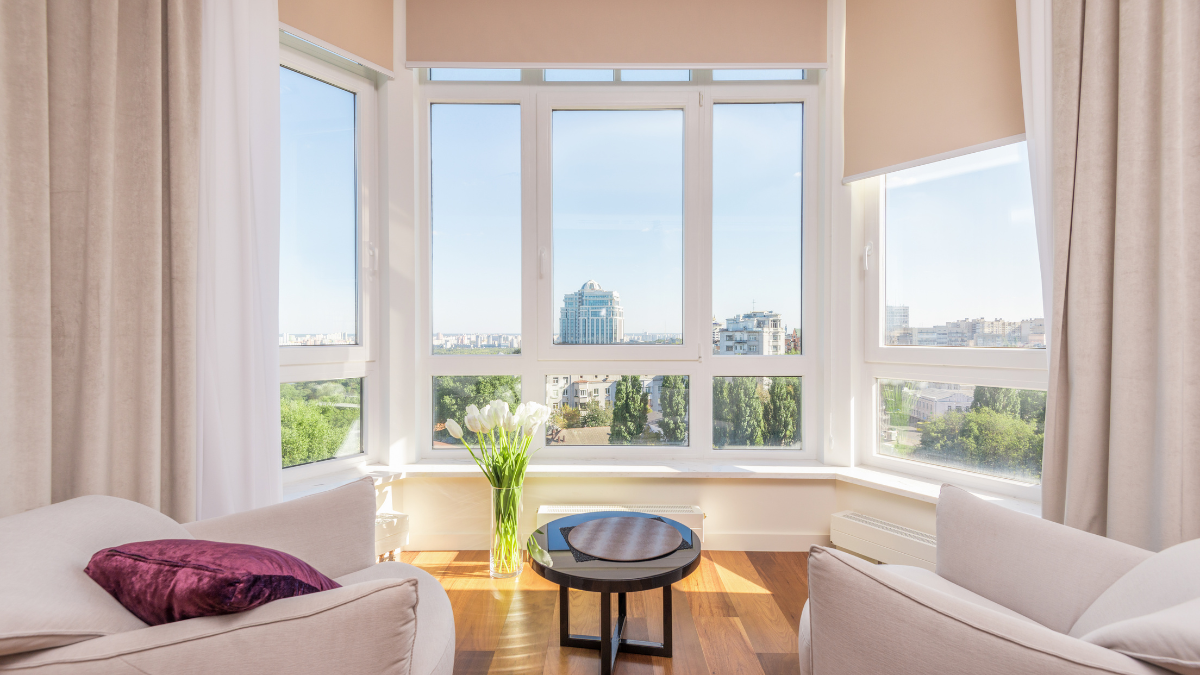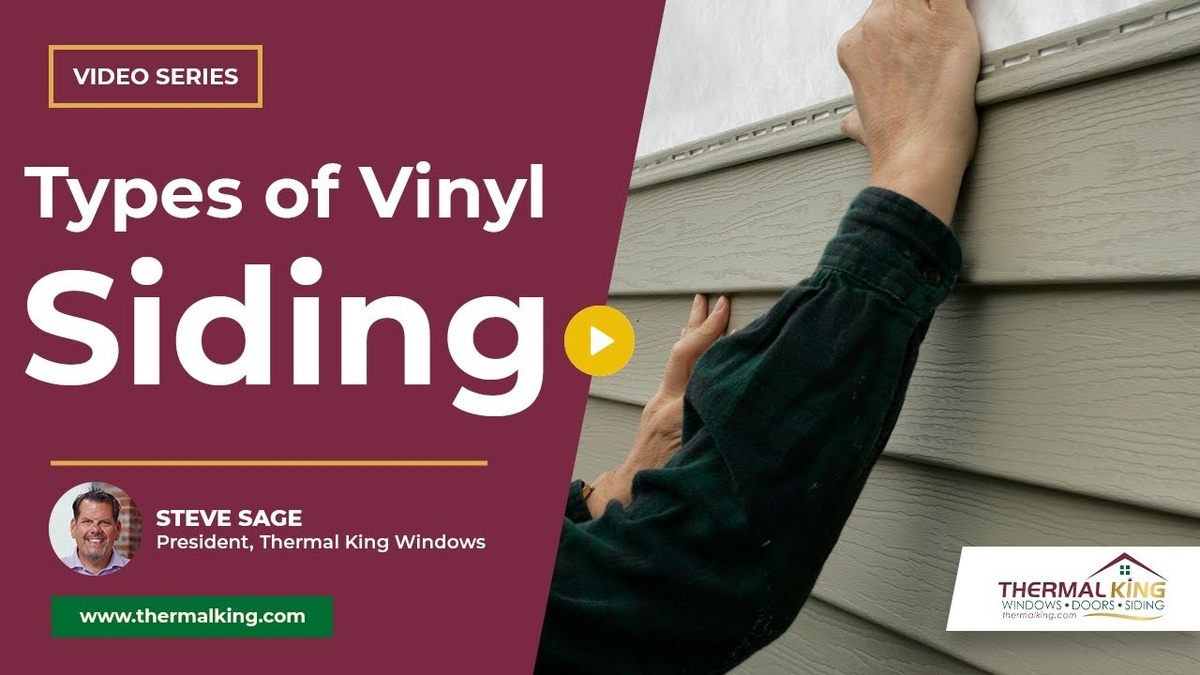When it comes to choosing the right windows for your home, there are various factors that you need to consider. Material, color, style and glass type just to name a few.
One of the key decisions you have to make is what type of window you want for your home. Homeowners commonly find themselves choosing between casement windows and slider windows. Both options have their own unique characteristics and advantages.
At Thermal King, we want to make sure you find the perfect windows for your home and budget. In this article, we will take a closer look at these two types of windows to help you make an informed, confident decision for your window replacement.
Understanding the Basics of Windows
Before diving into the specifics of casement and slider windows, it’s important to have a basic understanding of what windows are. Windows serve multiple purposes in a home. They allow natural light to enter, provide ventilation, and offer views of the outside world. In addition to these functions, windows also play a crucial role in the energy efficiency of a building. Properly installed and insulated windows can help regulate indoor temperatures, reducing the need for excessive heating or cooling.
What are Casement Windows?
Casement windows are windows that are attached to their frame by hinges on one side. They are operated by a crank mechanism that allows them to swing open like a door. Casement windows are typically taller than they are wide and are hinged on the side, either on the left or right, enabling them to open outwards. This design not only provides excellent ventilation but also allows for easy cleaning and maintenance, making them a popular choice for many homeowners.
What are Slider Windows?
Slider windows, also called sliding windows, are designed to slide open horizontally along a track. They consist of two or more sashes that slide past each other to provide an opening. Slider windows are wider than they are tall and are commonly used in modern homes. Their simple yet functional design makes them ideal for spaces where outward clearance is limited, such as patios or walkways. Additionally, slider windows are known for their smooth operation and contemporary aesthetic, adding a touch of modernity to any room.
Key Features of Casement and Slider Windows
Now that we have a basic understanding of casement and slider windows, let’s explore the key features that differentiate these two window types.
Design and Aesthetics
When it comes to design and aesthetics, both casement and slider windows have their own unique appeal. Casement windows offer a classic, timeless look that works well with traditional and colonial-style homes. The elegant cranks and hinges of casement windows add a touch of sophistication to any room.
On the other hand, slider windows have a more contemporary, sleek appearance that complements modern architectural styles. The smooth gliding motion of slider windows gives them a sense of effortless functionality, enhancing the overall modern aesthetic of a space.
Furthermore, casement windows offer unobstructed views due to their single pane of glass. This means that you can enjoy uninterrupted vistas of your surroundings, bringing the beauty of the outdoors inside. Slider windows, on the other hand, have a horizontal rail that divides the glass, affecting the overall view. However, this rail can also add a unique design element, creating a visually interesting pattern when multiple slider windows are installed side by side.
Ventilation and Airflow
Another important aspect to consider is ventilation and airflow. Casement windows are known for their excellent ventilation capabilities. When fully opened, they allow for maximum airflow, capturing breezes from multiple directions. This makes casement windows ideal for rooms that require ample ventilation, such as kitchens and bathrooms.
Slider windows, while they do provide ventilation, have a more limited airflow compared to casement windows. This is because only half of the window can be open at any given time. However, slider windows can still effectively provide fresh air and are suitable for rooms where maximum ventilation is not a priority. Their ability to partially open can also be advantageous in situations where you want to control the amount of airflow, such as during inclement weather or when you want to maintain a certain level of privacy.
Energy Efficiency
Energy efficiency is a crucial factor to consider when choosing windows. Both casement and slider windows can offer good energy efficiency, but they differ in how they achieve it.
Casement windows, when closed, create an airtight seal due to their design. This helps to prevent drafts and minimize energy loss, making them highly energy efficient. The tight seal also reduces noise infiltration, creating a quieter and more comfortable living environment.
Slider windows can also be energy efficient if they feature multiple panes of glass, low-emissivity coatings, and proper insulation. However, their sliding mechanism may not provide as tight of a seal as casement windows. To enhance the energy efficiency of slider windows, it is important to choose models with advanced weatherstripping and insulation materials.
When it comes to energy efficiency, it is also worth mentioning that both casement and slider windows can benefit from the addition of window treatments such as blinds, shades, or curtains. These treatments can further enhance insulation and reduce heat transfer, helping to keep your home comfortable and energy-efficient throughout the year.
Pros and Cons of Casement Windows
Pros of Casement Windows:
– Excellent ventilation and airflow, capturing breezes from multiple directions.
– Provide unobstructed views due to their single pane of glass.
– Excellent energy efficiency when closed, thanks to the airtight seal.
– Can be used to create large, dramatic window openings.
– Easy to operate and clean.
Casement windows have been a popular choice for homeowners seeking both functionality and aesthetics. Their ability to swing open like a door allows for maximum ventilation and airflow, making them ideal for rooms that require good air circulation. The single pane of glass in casement windows offers uninterrupted views of the outdoors, bringing in natural light and creating a seamless connection between the interior and exterior of a home.
Cons of Casement Windows
– Limited design options, may not suit all architectural styles.
– May be more expensive compared to other window types.
– Require more space around the window for opening and closing.
– Can be more prone to damage from high winds and storms.
While casement windows offer many benefits, they do come with some drawbacks that homeowners should consider. One of the main disadvantages is their limited design options, which may not complement all architectural styles. Additionally, the initial cost of casement windows can be higher than other window types, although their energy efficiency may help offset this expense in the long run. It’s important to note that casement windows require adequate space around them for opening and closing, so they may not be suitable for areas with limited room.
Pros and Cons of Slider Windows
Pros of Slider Windows
– Sleek, modern design that complements contemporary homes.
– Provide good ventilation and airflow, although more limited compared to casement windows.
– Can be more cost-effective compared to other window types.
– Easy to operate and maintain.
– Ideal for spaces where space is limited, as they do not require additional clearance for opening and closing.
Slider windows are a popular choice for many homeowners due to their simple yet elegant design. They offer a seamless look that can enhance the aesthetic appeal of any room. The smooth gliding motion of slider windows makes them a convenient option for those looking for easy operation without any hassle. Additionally, their low maintenance requirements make them a practical choice for busy individuals.
Cons of Slider Windows
– Half of the window cannot be fully opened at any given time.
– Horizontal rail may obstruct the overall view.
– Slider mechanism may not provide as tight of a seal as casement windows, affecting energy efficiency.
– Limited design options for customization.
While slider windows have their advantages, it’s important to consider their limitations as well. The inability to fully open half of the window can restrict airflow and ventilation in certain situations. The horizontal rail, though necessary for the sliding mechanism, can sometimes impede the panoramic view that other window types offer. Additionally, the seal provided by slider windows may not be as airtight as casement windows, potentially leading to energy loss over time. Homeowners looking for extensive customization options may find the design choices for slider windows to be somewhat limited compared to other window styles.
Maintenance and Durability: Casement vs Slider Windows
Both casement and slider windows are relatively easy to maintain. Regular cleaning and occasional lubrication of the moving parts are typically all that is needed to keep them in good condition.
When it comes to casement windows, their design often includes a crank mechanism that allows the window to open outward like a door. This unique feature provides excellent ventilation and a wide opening for easy cleaning from the inside. However, due to their moving parts, such as hinges and cranks, casement windows may require more frequent maintenance to ensure smooth operation over time.
On the other hand, slider windows operate on a simple horizontal sliding mechanism, making them easy to use and maintain. With fewer mechanical parts involved, slider windows are known for their durability and longevity. They are particularly suitable for contemporary home designs where a sleek, modern look is desired.
Despite their differences in construction and operation, both casement and slider windows offer benefits in terms of energy efficiency and aesthetics. Casement windows provide a tight seal when closed, reducing air leakage and improving insulation. Slider windows, with their large glass panes, allow for ample natural light to enter the room, enhancing the overall brightness and ambiance of the space.
Ultimately, the choice between casement and slider windows depends on your specific needs and preferences. Consider factors such as the architectural style of your home, desired ventilation capabilities, energy efficiency requirements, and budget when making your decision. Whichever option you choose, both casement and slider windows can enhance the aesthetics, functionality, and comfort of your home.
Top-Rated Window Replacement in Overland Park, Kansas
Thermal King has helped thousands of Kansas City homeowners find the perfect windows for their home and budget. We’re a top-rated Overland Park window replacement company and are proud of the accolades we’ve earned from our customers.
Thermal King offers high quality window replacement and has a large selection of windows — including highly rated windows from Marvin and Provia.
If you’re ready to get started on your window replacement, we’d love to see if we’d be a good fit for your project. Contact us today to set up your free, no-hassle consultation.




